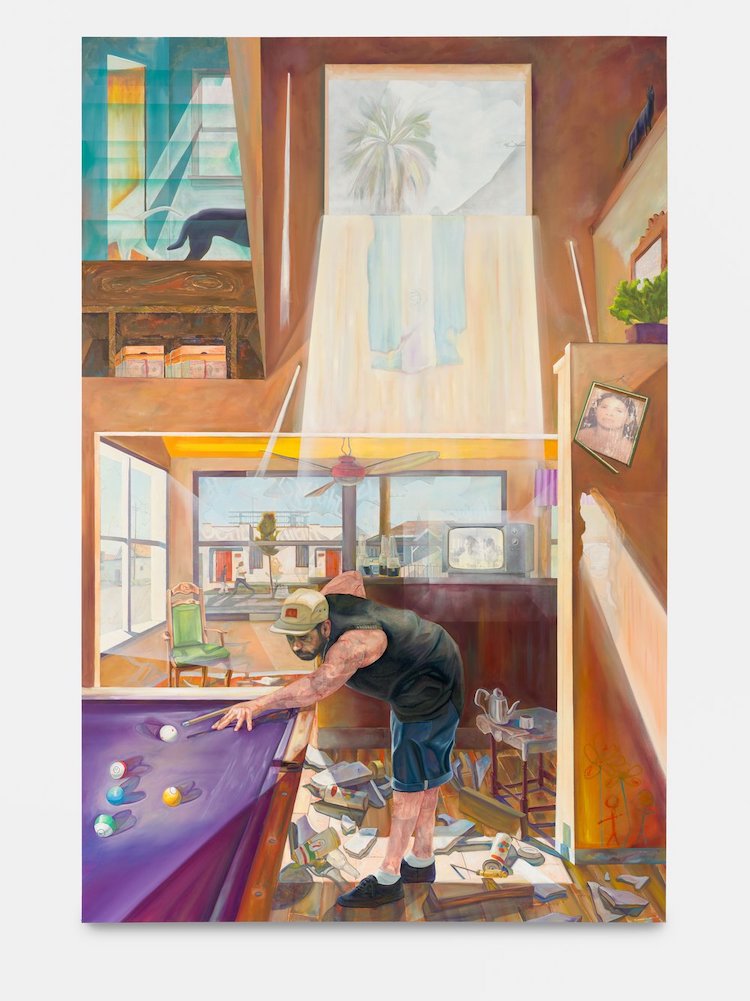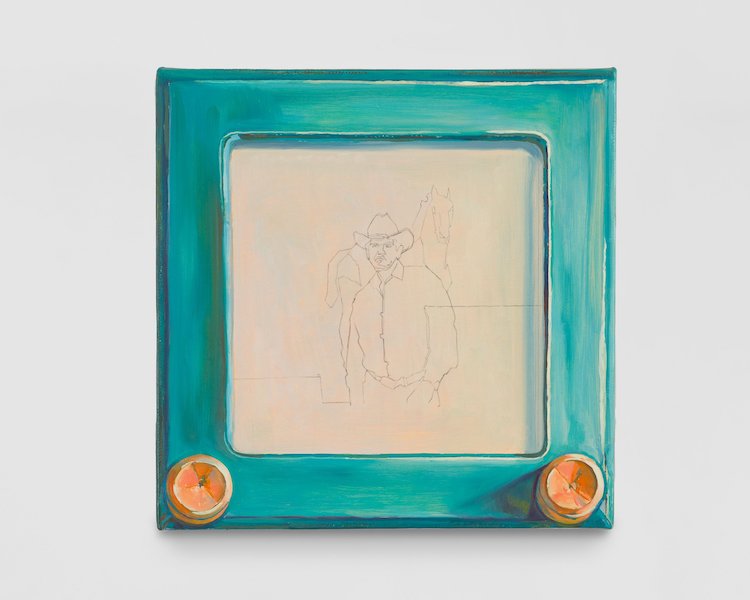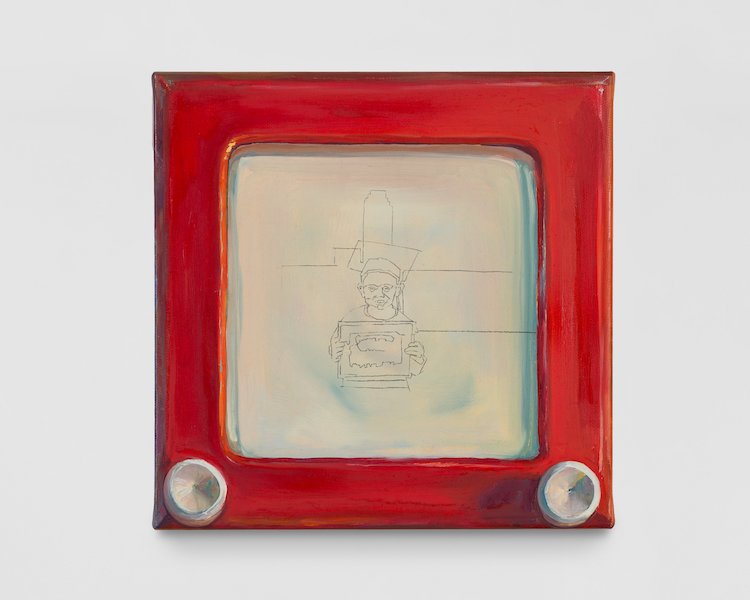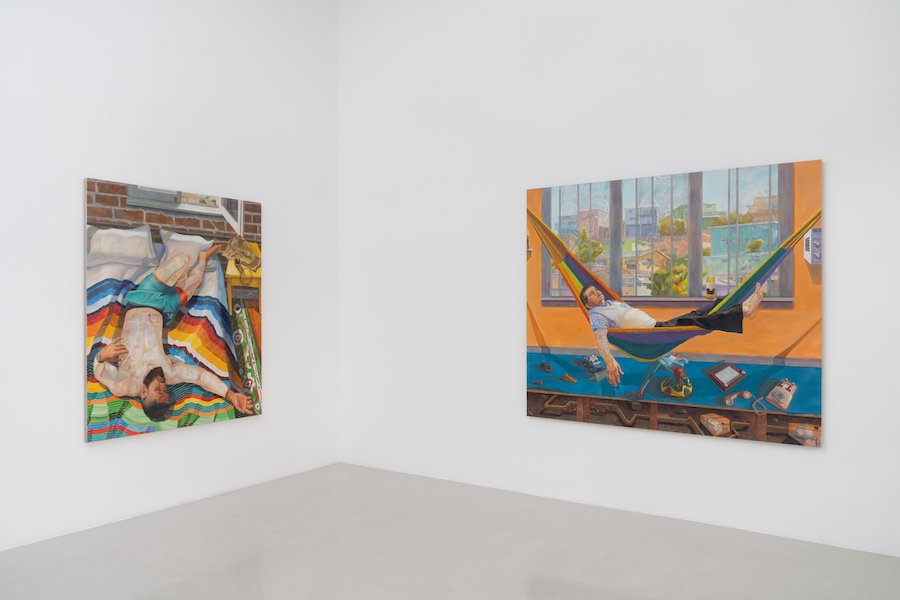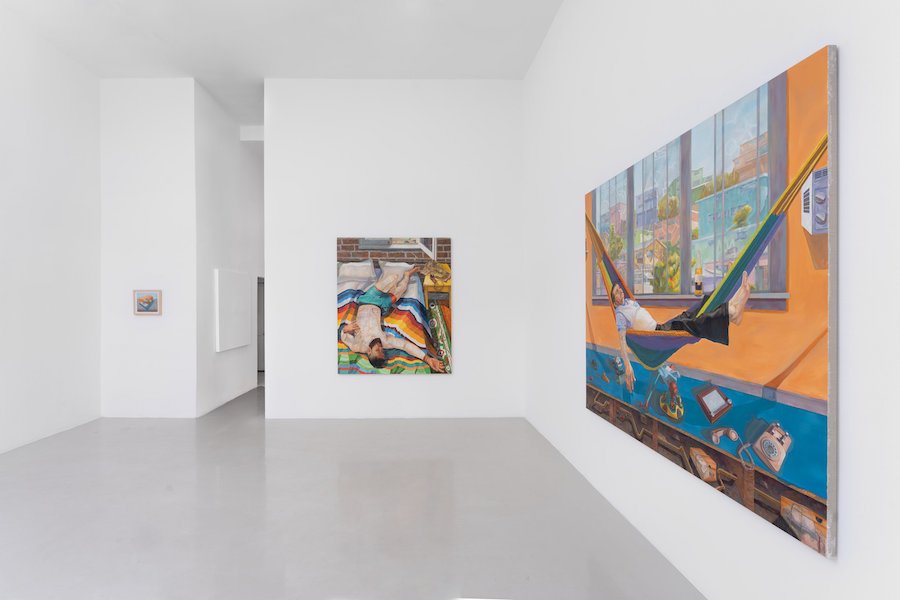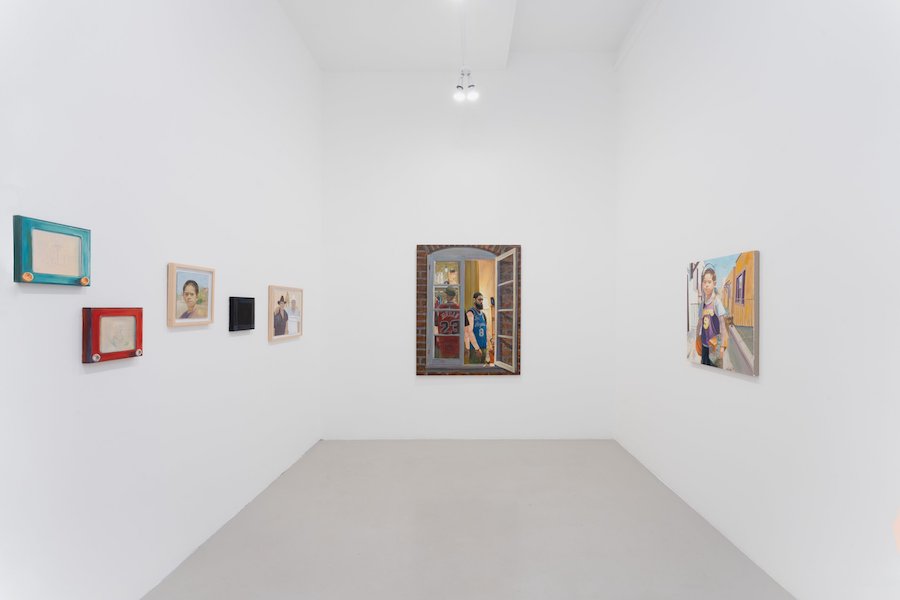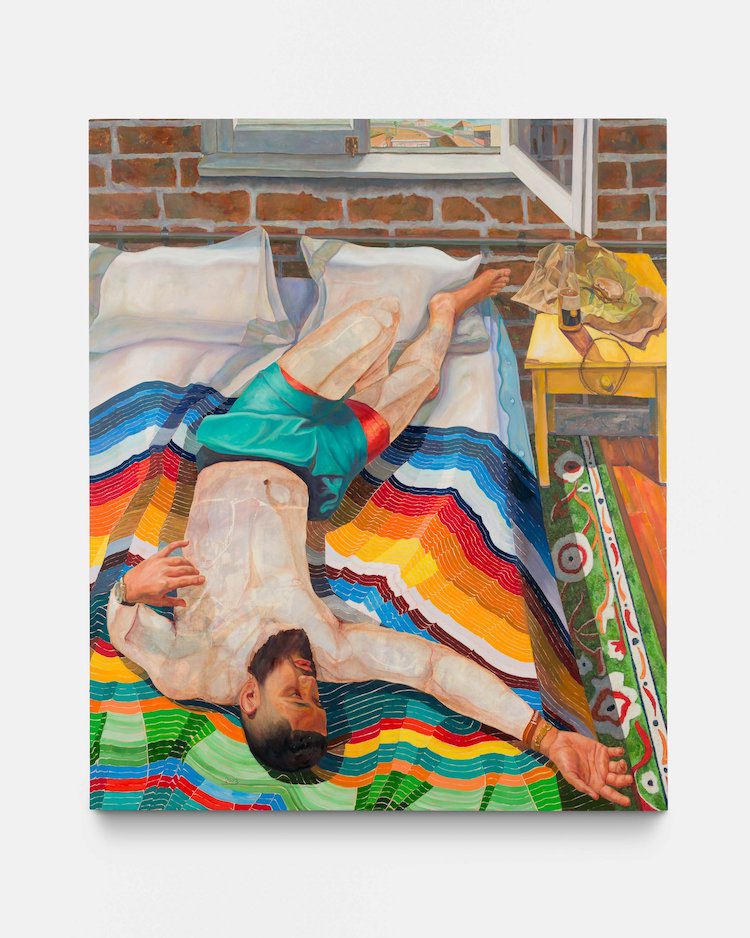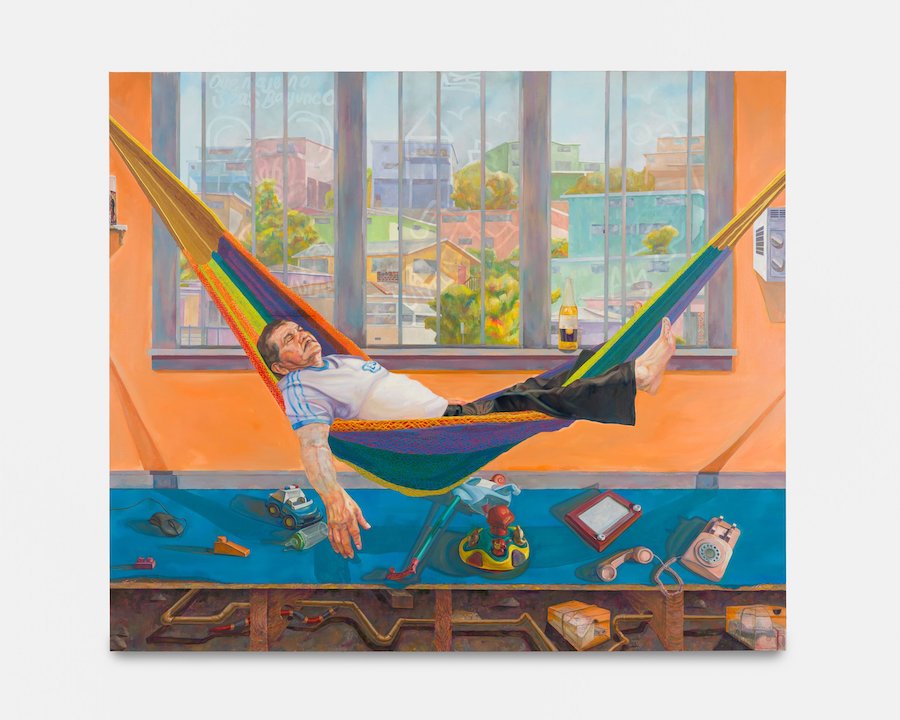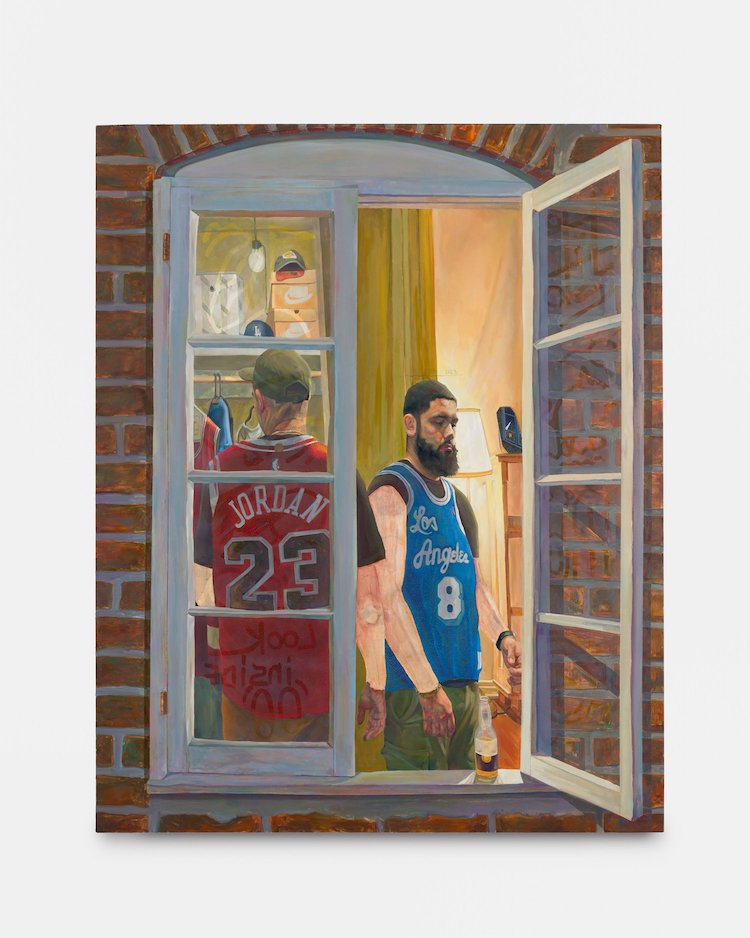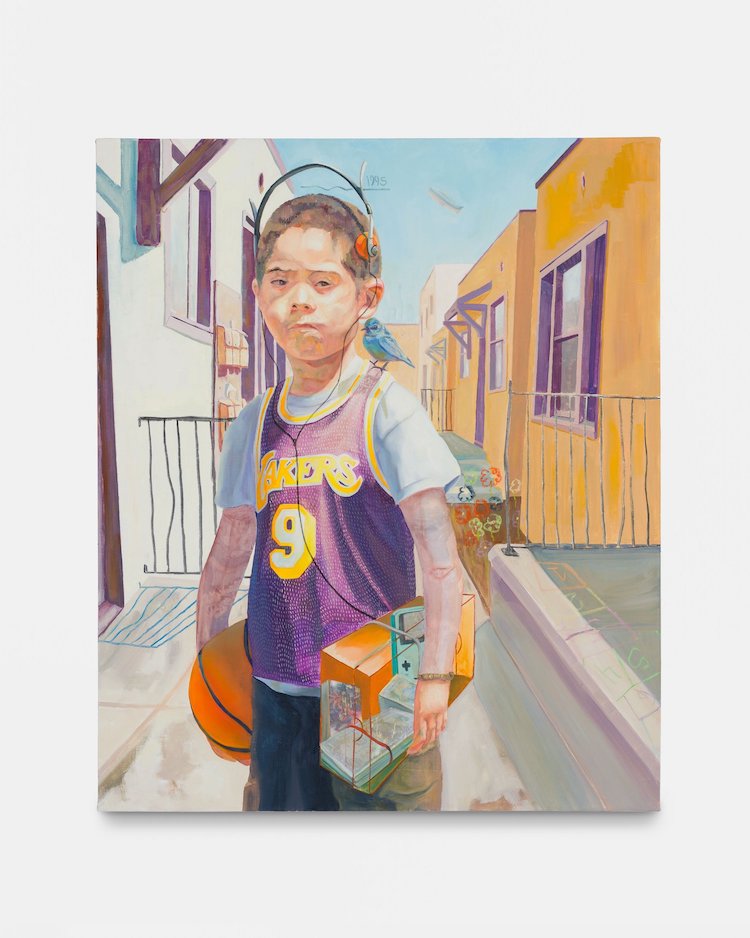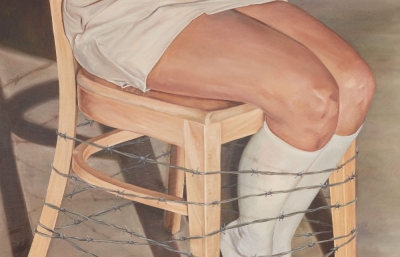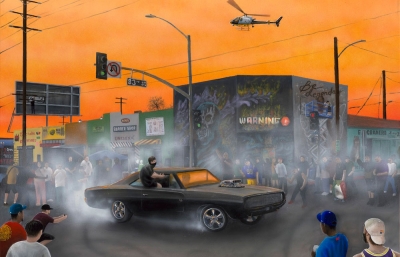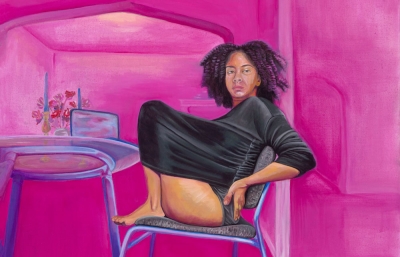Charlie James Gallery is delighted to present a solo exhibition of works by Los Angeles-based artist Elmer Guevara titled House Money, on view through September 16, 2023.
Elmer Guevara’s work draws experience from his life as a Salvadoran from South Central Los Angeles. Guevara’s latest show House Money, pulls reference from the domestic and Ursula K. Leguin’s The Carrier Bag Theory of Fiction, in which she defines a binary of stories; the story of heroes and the other being the story of containers. She defines containers as non-heroes which tell the stories of mundanity and collection. Like many other Central Americans living in Los Angeles, Guevara’s family fled El Salvador during the civil war, one that the United States government orchestrated. Due to Guevara’s familial history his work layers containers, spaces, and memories to showcase the non-heroes and their stories of gathering.
Through five paintings, small mixed media paintings and several drawings Guevara allows for the viewer to gaze into his own understanding of home. Security is Under the Mattress depicts Guevara’s father, taking a nap on a hammock by a window. Below him we find a variety of toys and other household items laid across the floor. Beneath the floor, we can see a doll house-like depiction of the house, in which the crawl space is opened up for viewership, within the crawl space, there are two shoe boxes, or in the context of Le Guin’s theory, there are two containers, one with a stack of money and a gun inside, another box sits next to it with a stack of cash inside. It is not an uncommon practice for immigrant parents to stash money or important documents under a mattress or in a sock drawer, or in this case under a floorboard, especially for those who come from unstable countries where banks are not the most reliable. This painting of Guevara’s father points to the safety provided inside their home; where his father serenely sleeps above the family’s nest egg like a protective hen.
Taken from an old photo of the artist as a child, Young Grasshopper shows Guevara wearing a Lakers jersey and a Walkman surrounded by rows of homes painted purple and gold, while the Goodyear blimp can be seen floating in the background, Guevara carries with him a shoebox filled with his own childhood valuables; a Gameboy, Spider-Man trading cards and two small stacks of money, these objects work to paint a picture of young Guevara’s childhood interests. In Last Days in the Flop Guevara paints a scene of the artist playing a game of pool inside the home, presumably on the first floor of the house, while Guevara plays pool the Chicano classic American Me (1992), is on TV. On the second floor we see a tattered Salvadoran flag by a window as well as the rear of a black dog and a white dog can be seen walking in opposite directions of one another atop two shoe boxes of cash. While these boxes are not so hidden, they are still protected by their owners in secure spaces.
Dried up on a Sunday shows Guevara’s younger brother, Alex laid out in bed recovering from a hangover from the Saturday before. Seen in the background are a half drunk bottle of Corona and the leftover wrappers of a McDonald’s breakfast. Wearing only shorts, Alex’s skin is visible and bears faint images reminiscent of tattoos however, upon closer look, we see that these are not tattoos but images taken from familial memories and photos. Using a gel transfer process, Guevara takes family photos, warps them to fit the skin of his subjects and transfers these scenes onto their bodies. Born two years prior to the end of the Salvadoran Civil War, Guevara, and many other Central American estadounidense (Americans) exist in the liminal post-memory generation; where though their bodies may hold memories of a traumatic past, their minds don’t necessarily do the same. Though removed from the actual events of the war, Guevara and his siblings carry it’s legacy through stories, photos, and generational trauma. Cada día más loco, depicts Guevara and his brother in an intimate pose, as we peer inside through a window, Guevara wears a Michael Jordan jersey while his brother wears a vintage Kobe jersey; pointing towards their own generational GOATs. Whether in a heated discussion or merely walking past each other we do not know, the two men seem to be facing away from one another due to some reason unbeknownst to the audience. While two Nike boxes sit on the top shelf of a closet, this image does not have the same opacity as the other shoe boxes throughout House Money and we do not know the riches that they may hold; this story is a private one for only Guevara and his brother to share.
House Money, the titular work of this show, is a mixed media work of an orange Nike shoebox which transparently shows the contents of this container which holds within it cash, another pseudo-bank in Guevara’s work. My first hang outside the block shows the young Guevara in the same pose as Young Grasshopper, possibly reflecting on his own past once Recorded jams from the Radio shows young Guevara with his Walkman, this time smiling in his room. Any child of the 90’s remembers the joy of taping your favorite song on the radio over to your own personal cassette to avoid the cost of buying an entire album. Los dos compadres once again honors Guevara’s family and their history, depicting his father and his father’s best friend he shows the intimacy between two male friends who’s closeness is even visible in their matching styles. In a series of oil works titled Sketch no. 9, no.5 and no. 10 show several Etch a Sketch drawings of scenes from family photos, unlike the photo tattoos on his other subjects these sketches point to the ephemerality of memory as well as the imprints it leaves, as no matter how hard you shake an Etch a Sketch clean, the lines of the past remain.
-Text by Leah Perez



